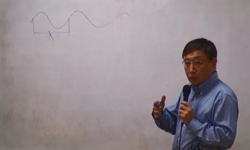Stage-discharge curve is a graph of discharge versus stage for a given point on a stream, usually at gauging stations, where the stream discharge is measured across the stream channel. The rating curve is a very important tool in surface hydrology bec...
http://chineseinput.net/에서 pinyin(병음)방식으로 중국어를 변환할 수 있습니다.
변환된 중국어를 복사하여 사용하시면 됩니다.
- 中文 을 입력하시려면 zhongwen을 입력하시고 space를누르시면됩니다.
- 北京 을 입력하시려면 beijing을 입력하시고 space를 누르시면 됩니다.
https://www.riss.kr/link?id=T12926510
- 저자
-
발행사항
전주: 전북대학교 산업기술대학원, 2012
-
학위논문사항
학위논문(석사) -- 전북대학교 산업기술대학원 , 산업기술학(토목공학) , 2012. 8
-
발행연도
2012
-
작성언어
한국어
- 주제어
-
발행국(도시)
전북특별자치도
-
기타서명
A Development of Bayesian Multi-segment Stage-Discharge Curve
-
형태사항
ⅶ, 102 p.: 삽화; 27 cm.
-
일반주기명
전북대학교 논문은 저작권에 의해 보호받습니다
지도교수:권현한
참고문헌 : p.100-102 - 소장기관
-
0
상세조회 -
0
다운로드
부가정보
다국어 초록 (Multilingual Abstract)
Stage-discharge curve is a graph of discharge versus stage for a given point on a stream, usually at gauging stations, where the stream discharge is measured across the stream channel. The rating curve is a very important tool in surface hydrology because the reliability of discharge data values is highly dependent on a satisfactory stage-discharge relationship at the gauging station. It has been acknowledged that a one-segmented stage-discharge curve is insufficient due to the change in geometry and/or channel resistance. This study investigates Hierarchical Bayesian methods to better derive complex stage-discharge relationship. Parameter estimation and associated uncertainty analysis is performed using Markov Chain Monte Carlo Simulation (MCMC). The multi-segmented stage-discharge curve is formulated as a piecewise regression problem where the number of change points are assumed unknown. It was found that the proposed procedure gave the improved results in terms of reducing error propagation due to change points. Also, the results demonstrated that the proposed model procedure provided the better estimates of extrapolated part of the stage-discharge curve.
목차 (Table of Contents)
- 표차례 ⅲ
- 그림차례 ⅳ
- Abstract ⅵ
- 제1장 서론 1
- 1.1 연구배경 및 목적 1
- 표차례 ⅲ
- 그림차례 ⅳ
- Abstract ⅵ
- 제1장 서론 1
- 1.1 연구배경 및 목적 1
- 1.2 연구동향 3
- 1.3 연구방법 및 범위 6
- 제2장 유량조사 7
- 2.1 유량조사 절차 및 요령 7
- 2.1.1 유량관측지점 7
- 2.1.2 유량관측 설비 12
- 2.1.3 유량 측정 14
- 2.2 유량측정방법 17
- 2.2.1 유속계에 의한 유량측정 17
- 2.2.2 전자파 표면유속계에 의한 유량측정 41
- 2.3 수위-유량관계곡선 작성 50
- 제3장 Bayesian 모형 기반 수위-유량관계 곡선 60
- 3.1 Bayesian 모형 60
- 3.2 Markov Chain Monte Carlo 모의 63
- 3.3 Multi-segmented 수위-유량관계 곡선 개발 66
- 제4장 Bayesian 수위-유량관계 곡선식 적용 74
- 4.1 관측대상지점 현황 75
- 4.1.1 일반현황 75
- 4.1.2 실측자료 79
- 4.1.3 기존 수위-유량관계곡선식 82
- 4.2 Bayesian 모형을 통한 매개변수 최적화 및 불확실성 분석결과 84
- 4.2.1 매개변수 최적화 및 불확실성 분석결과 86
- 4.2.2 Bayesian 모형을 이용한 수위에 따른 유량 산출결과 89
- 4.2.3 기존 수위유량관계곡선식과의 비교분석 결과 92
- 4.3 Bayesian 회귀분석을 이용한 수위-유량관계곡선 개발 92
- 제5장 결론 및 토의 98
- 참고문헌 100











